The Historic and Natural Ensemble of Bisotun
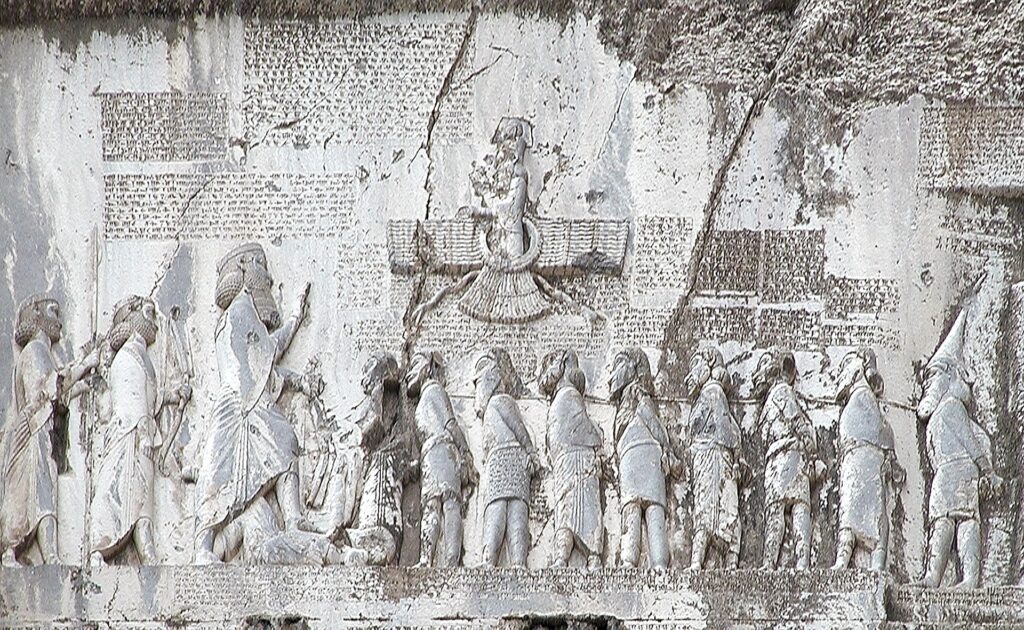
Situated 30 kilometers northeast of Kermanshah and southwest of the town of Bisotun, this site is a remarkable amalgamation of history, culture, and nature. The sanctity of Mount Bisotun, along with its strategic location along important historical routes like the Silk Road, has drawn kings and rulers over millennia.
The area boasts 28 registered national monuments and more than 150 identified historical works. One of the most celebrated is the inscription by Darius I, which has also been listed on the UNESCO World Heritage list since 2006. Also, the statue of Hercules and other relics like Farhad Tarash, various inscriptions, Bisotun spring, and Khosrow Bridge add to the list of attractions.
For religious pilgrims, the Imamzadeh Baqer, attributed to Imam Kazem, offers a serene spiritual experience. If you’re looking for a place to stay, the Safavid caravanserai has been converted into Laleh Bisotun Hotel, a cozy four-iwan structure perfect for travelers.
Tagh Bostan and Koohestan Park
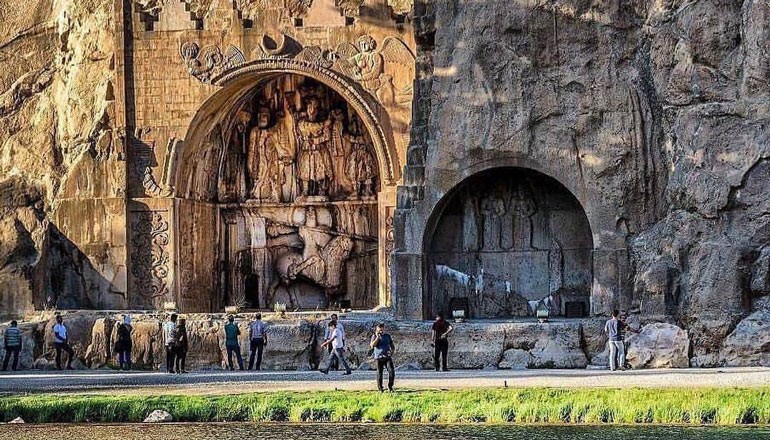
Located in the northwestern part of Kermanshah city, Tagh Bostan is an ensemble of rock reliefs and inscriptions dating back to the Sassanian era. It includes two main arches and several inscriptions, marking it an invaluable work of art and history. A museum within the vicinity offers additional insights into this ancient site.
What makes Tagh Bostan even more captivating is its proximity to nature. Located against a mountain and spring, the area has been a recreational hotspot since ancient times. You can walk towards Koohestan Park, which is very close by, and soak in the awe-inspiring beauty of a path surrounded by towering, ancient trees. Local belief holds that a tree in this area is more than 600 years old!
Don’t forget to visit one of the traditional eateries or restaurants in the area to taste the famous Kermanshahi “Dandeh Kebab.” As you ascend Koohestan Park, you can marvel at the panoramic views of Kermanshah city, especially mesmerizing at night.
Do-Ashkaft Cave
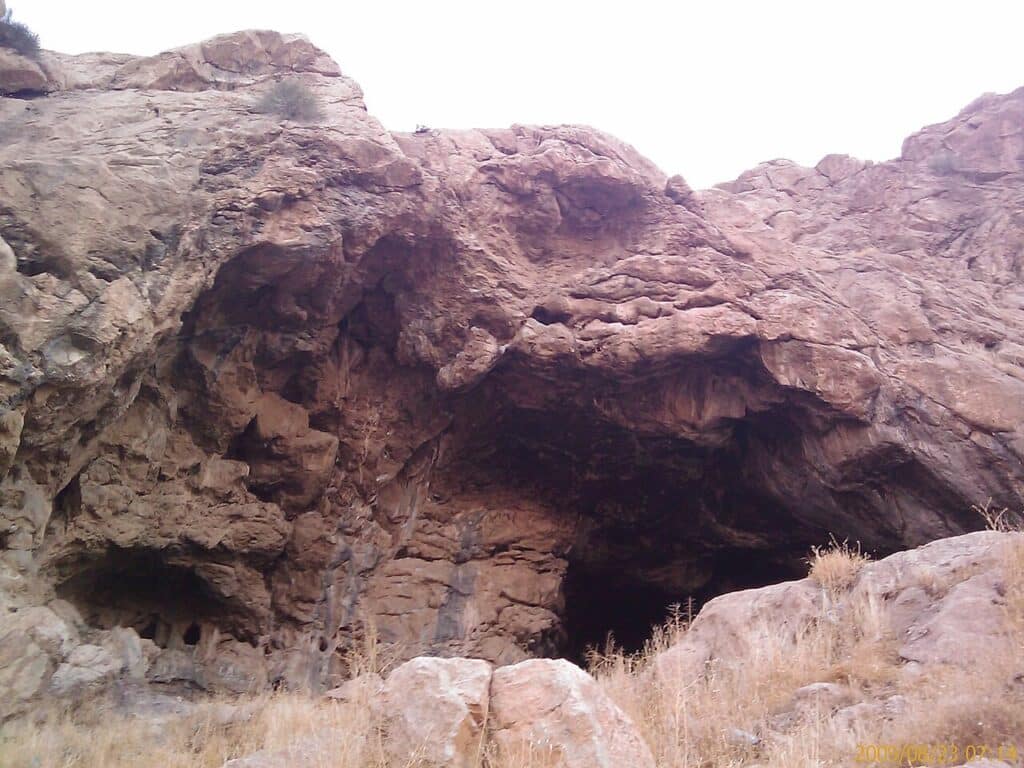
If mountain climbing and panoramic vistas are your things, Do-Ashkaft Cave is a must-visit. Situated in the northern part of Kermanshah, at the foothills of Mount Miyouleh, this cave offers a breathtaking view overlooking the mountainous park. What makes it more fascinating is its historical relevance as the oldest evidence of human settlement in Kermanshah.
- Elevation: About 1600 meters above sea level
- Unique Features: Consists of two adjacent caves, located about 300 meters above the plain.
Anahita Temple of Kangavar
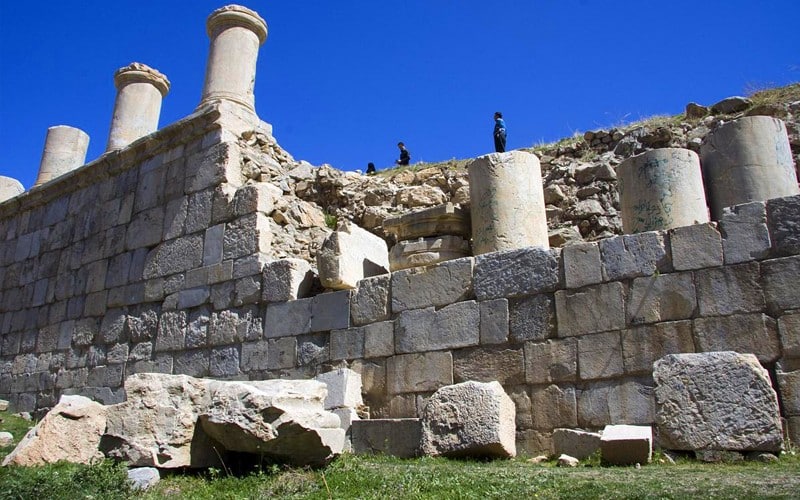
A monumental historical site, the Anahita Temple dates back to the Parthian and Sassanian eras. Perched on a rock overlooking the Kangavar Plain, it was dedicated to Anahita, the goddess of water, abundance, beauty, and fertility.
- Location: On the route from Hamedan to Kermanshah
- Unique Features: One of the largest stone buildings in Iran
Sarab-e Niloufar
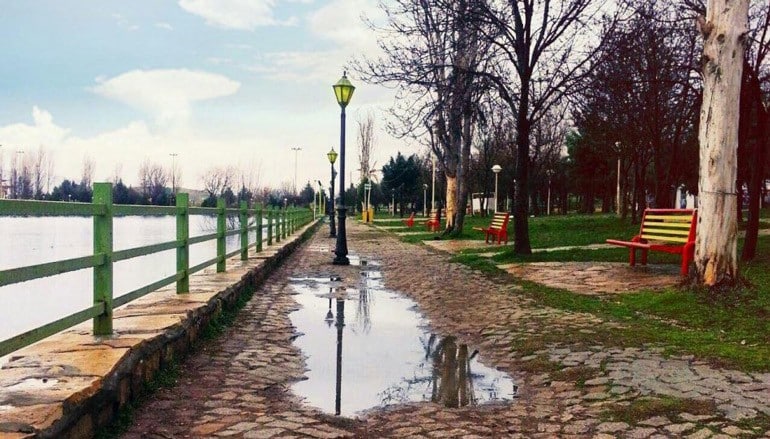
If tranquility is what you’re after, Sarab-e Niloufar, located 30 km northwest of Kermanshah, is the ideal spot for you. The small lake, teeming with blue water lilies, offers spectacular sights, especially in the warm seasons. Don’t forget to indulge in some boat riding or even fishing!
- Unique Features: A picturesque lake filled with blue water lilies, various amenities for tourists, and opportunities for boating and fishing.
Quri Qaleh Cave
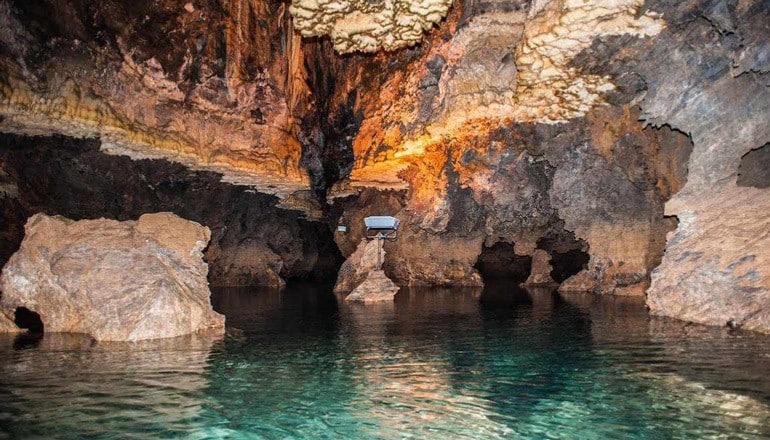
Positioned about 87 km from Kermanshah and 25 km from the city of Ravansar, the Quri Qaleh Cave is an awe-inspiring subterranean marvel. With a length of 12 km, it’s the largest water cave in the Middle East. The cave’s interior temperature remains constant, ranging between 7 to 11 degrees Celsius, throughout the year.
- Unique Features: Several beautiful chambers and is listed as one of the seven natural wonders of the world.
Tekyeh Moaven Al-Molk
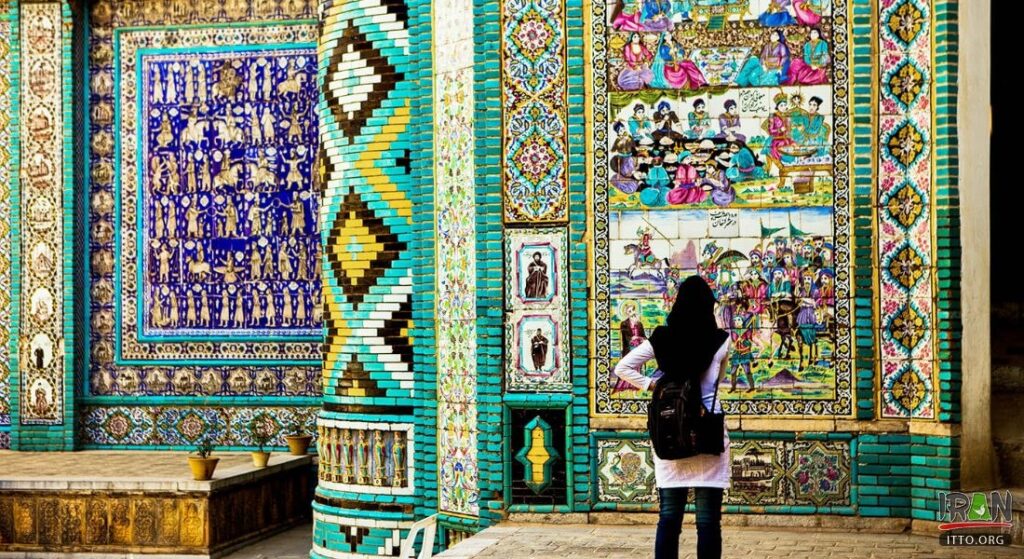
In the heart of the ancient city of Kermanshah, you’ll find Tekyeh Moaven Al-Molk, a historical edifice dating back to the Qajar era. Located in the old Abshouran neighborhood on Haddad Adel Street, the unique selling point of this gem is its unparalleled tilework. The intricate and semi-relief tiles, adorned with beautiful patterns and all-natural colors, are considered peerless worldwide.
The complex comprises three main parts: Hosseiniyeh, Abbasiyeh, and Zeinabiyeh, each with its own entrance. Notably, the Abbasiyeh section hosts the Ethnographic Museum of Kermanshah. This museum was established in May 1990 and covers an area of 200 square meters, featuring 29 showcases filled with ancient artifacts, handicrafts, and clothing that reflect the cultural and social themes of the region. Also, the Abbasiyeh section houses a separate museum for clothing and jewelry.
Kermanshah’s Traditional Bazaar
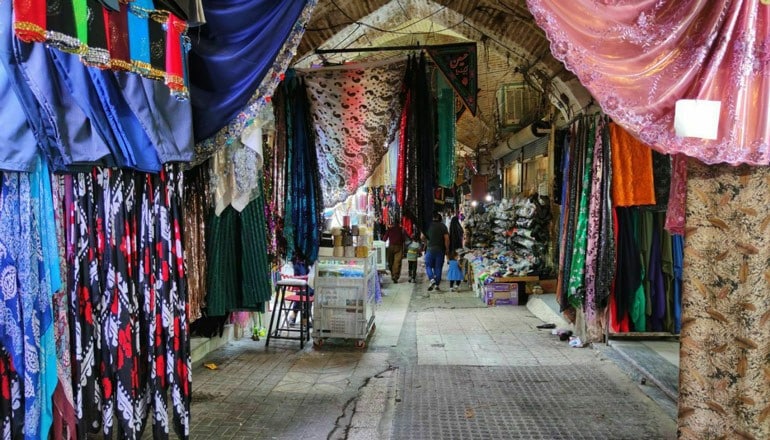
The covered Traditional Bazaar of Kermanshah is one of the city’s shopping hubs and among Iran’s largest roofed bazaars. This sprawling marketplace is now divided into four sections due to the crossing of main city roads, offering a myriad of stalls and shops that are a major tourist attraction. Here, you can purchase local clothing, souvenirs, and Kermanshah’s special handicrafts.